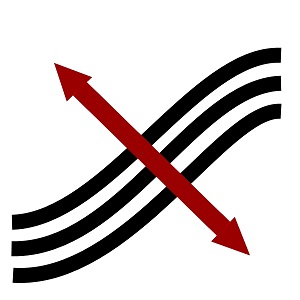Like-Blog
Presenting you the most interesting translation solutions

Why Like-Blog? Now, first of all, this blog is a blog that you should like (and read regularly) – at least, if you are interested in translation. Then, the topic discussed here is one in which the meaningful likeness between a text and its translation in the language pair English-German plays a key role. On this page, I will take a close look at some interesting translation solutions that I have come across in the course of my work as a translator and translation scholar.
A translation solution is only as good as the arguments that support it. This means that any translation criticism, whether positive or negative, needs to be justified. The quality of a translation solution shows only when we compare it to other possible translation solutions in a given translation situation. Therefore, a translation critic should not only say why a translation solution is bad, but also demonstrate what a better solution might look like. I will try to stick to these principles of translation criticism. So if you have any questions regarding my line of argument or if you disagree, please, let me know your opinion by phone at +49 4171 6086525 or by e-mail to bittner@businessenglish-hamburg.de. So much for the introduction. I hope you’ll enjoy reading this blog!
What it means to translate “covertly” (May 2020)
The distinction between “overt” and “covert” translation – introduced by Juliane House – should have a decisive impact on how a translator translates. A so-called “overt translation” is a translation that is recognised as such by the reader: the reader reads the translation in order to be able to understand the corresponding original. Legal documents, certificates, and classic works of literature are typically translated “overtly”. By contrast, the translation of user manuals and journalistic articles tends to be “covert” since the reader of the translation either doesn’t know that he or she is reading a translation or is not at all interested in this fact. For the translator, this distinction means with regard to covert translation: if the source text is irrelevant to the reader of the target text, then the target text should be written in such a way that the reader does not notice that he or she is reading a translation. Thus, the translator has to take care not to retain in the target text any discrepancies or errors of the source. In other words: the quality of the translation should be at least as good as that of the original.
This month’s example is once again based on Michael Grunwald’s article “America’s Untapped Energy Resource: Boosting Efficiency”, published in TIME Magazine on 31 December 2008. Here, we read: “He is considering incentives for retrofitting inefficient buildings, buying highly efficient appliances and building co-generation plants that help turn waste heat into energy.” This sentence was translated: “Außerdem erwägt er Anreize für die Sanierung energetisch ineffizienter Gebäude, den Erwerb von hocheffizienten Geräten und den Bau von Heizkraftwerken, die Abwärme in Energie umwandeln.” The translation seems ok. The sentence is perfectly comprehensible. What is the problem?
The problem is that the translator fails to recognise a semantic weakness of the source text, which is why this weakness also appears in the target text. The average reader probably won’t notice it; however, the more observant reader will find that the end of the sentence is not logical: waste heat is energy and therefore cannot be turned into energy. In English, the problem can be solved by adding “usable” or “useful” before “energy”; the German translation could run: “Außerdem erwägt er Anreize für die Sanierung energetisch ineffizienter Gebäude, den Erwerb von hocheffizienten Geräten und den Bau von Heizkraftwerken, die die Abwärme nutzen.”
